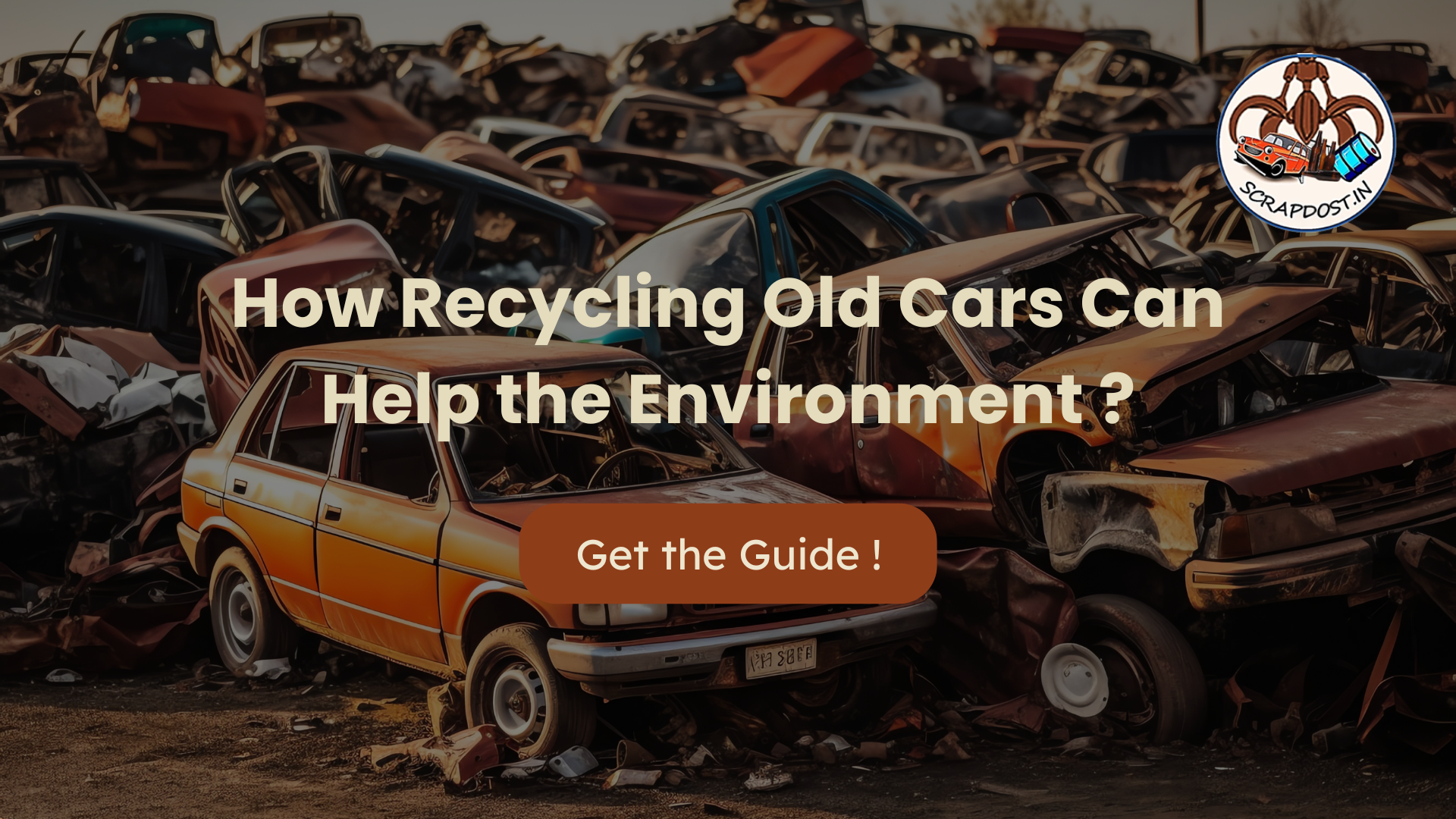With the increasingly deteriorating trends emerging for our environment, recycling has been considered an essential solution for the reduction of waste as well as the conservation of resources. The automotive industry is one field where recycling can have a significant impact. Each year, tens of millions of vehicles are retired, and thus millions of tons of scrap are generated. The recycling of these old cars has more than one advantage when it comes to the environment. This blog will include the effects of vehicle scrap on the environment and the benefits of recycling old cars.

When vehicles are no longer operable or economically viable to repair, they often end up in junkyards or landfills. This creates several environmental issues:
Old vehicles take up a lot of space in landfills. Since more cars are retiring annually, the constant need for landfill space also rises. This not only causes problems such as overburdening of landfills but also results in the development of new landfill sites, hence leading to the destruction of natural habitats.
There are wide varieties of fluids and chemicals such as oil, coolant, brake fluid, and battery acid within a vehicle. When such vehicles are dumped or disposed of in the wrong manner, the dangerous materials have the harmful effects of polluting the soil and water resources. It can also have a negative impact on the biology of water systems, animals, and people living in the region.
Different types of materials are used in the production of vehicles, and these include metals, plastics, and rubber. Mining these resources and refining the components of these materials are energy intensive processes. When old vehicles do not undergo the recycling process, the metals are wasted and therefore require mining or other forms of extraction for new car production. This further leads to the exhaustion of resources and pollution of the environment.
Recycling old cars can mitigate many of the environmental problems associated with vehicle scrap. Here are some of the key benefits
Recycling keeps old vehicles out of dump sites thus preserving space for other waste that cannot be recycled. This assists in the reduction of burden on the present landfill sites and hence minimizes the number of new sites.
Automobiles are made up of considerable quantities of potentially valuable metals and other materials that can be recovered from the cars and recycled. For instance, steel, aluminum, and copper that form the structure of the vehicle can be retrieved and reused to manufacture new cars or other automobiles. By supporting the recycling of these products, original raw materials need not be mined and processed again, which helps with the conservation of resources and the environment.
Using metals from old vehicles is more cost effective than having to mine new metals and then process them. For example, recyclable aluminum conserves up to 95% of the energy required to extract aluminum from bauxite ore while recycled steel conserves about 60% of the energy needed to process new steel. Such energy saving measures entail lesser emissions of greenhouse gasses, which in turn makes the carbon footprint minimal.
Used car disposal should entail eliminating automotive fluid and other hazardous substances properly. Many recycling centers are capable of disposing of toxic materials, and they know how to manage any resulting hazards. This contributes to the improved conservation of soil, water, and air, and to managing the social and ecological well-being of populations.
Using old cars as recycled materials is part of the concept of the circular economy, in which products and materials are used to their maximum potential. Reusing car parts helps save production materials, decrease waste, and support green manufacturing) This shift to a circular economy system thereby contributes to the development of a more sustainable and resilient economy.
Recycling a vehicle involves several steps to ensure that materials are efficiently recovered and reused. Here is an overview of the typical process.
The process of recycling a vehicle begins with depollution. This entails removal of all the potentially destructive fluids, including oil, coolant, brake fluid, and battery acid. Other parts, such as batteries, airbag systems, and other components containing hazardous materials, are also stripped and disposed of appropriately.
Following this, the vehicle is stripped to extract useful parts and assemblies that may be salvaged or repurposed. This includes items such as engines, gears, and control circuits. These parts can be sold as scrap for other vehicles or even other industries, depending on their type.
Once disassembled, the remaining car shell is compacted and recycled into small particles. In this process, various materials, including metals, plastics, and rubber, are sorted out. Through magnets and other technologies, the different materials are sorted and recovered in the process.
They are then collected, recycled, and, in some cases, subjected to preparatory processes to render them ready for use again. Scrap metals are recycled by being processed to soften, purify, and prepare them for reuse in fabricating new automobiles or wholly different manufactures. Plastics and rubber can also be recycled, or repurposed into new products, or sold to firms in other sectors.
The recycling of old cars is an important practice that has enormous benefits, including those that come from the preservation of the environment. As a result, potential negative environmental effects of vehicle scrap are minimized through efficient methods of avoiding vehicles going to landfills, new material recovery, energy preservation, and reduced toxic emissions. With emerging efforts to enhance the quality of life for people, the process of recycling in the automobile industry remains crucial. Vehicle recycling is one of the best ways through which we can prevent the wastage of natural resources while at the same time protecting the environment to support the circular economy.
© 2025 ScrapDost